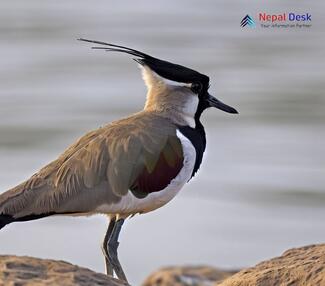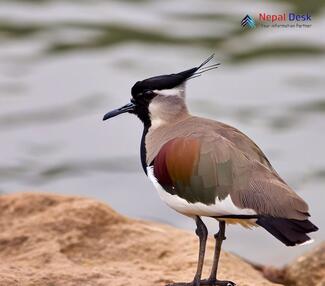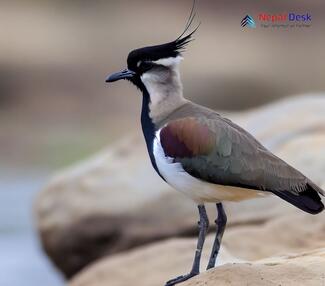The River Lapwing (Vanellus duvaucelii) is a fascinating bird species found in the wetlands and riverbanks of South and Southeast Asia. Boasting unique physical features, an interesting habitat, and a specialized diet, it's an intriguing species to explore. Let's delve into the world of the River Lapwing and learn about its taxonomy, presence in Nepal, life in its riverside habitat, and dietary habits, as well as some noteworthy facts.
Taxonomy and Physical Features
Belonging to the family Charadriidae, River Lapwings are medium-sized birds classified under the order Charadriiformes. Adults typically measure between 28-32 cm in length and showcase striking plumage. They exhibit blackish-grey upperparts combined with a white underside, while their distinctive long yellow legs and a red fleshy wattle above the beak make them easily recognizable among other shorebirds.
Habitat Preferences
The River Lapwing is primarily found along large river systems and prefers sandy habitats with exposed sandbars, shingle banks, or pebble-strewn shores. These birds are highly dependent on their riverside environs for breeding, nesting, and feeding grounds. They're commonly found across India, Bangladesh, Myanmar, Cambodia, Vietnam, Laos, Thailand—and notably—Nepal.
Presence in Nepal
In Nepal, these alluring birds inhabit lowland river valleys at altitudes below 500 meters. They're particularly concentrated around the Koshi Tappu Wildlife Reserve—the largest wetland reserve in Nepal—which encompasses numerous ponds and oxbow lakes and provides critical habitat for many local migratory bird species.
Dietary Habits
River Lapwings exhibit a carnivorous diet mainly consisting of insects such as beetles, crickets, grasshoppers, and aquatic insects like water striders. Using their long legs and beaks, they actively forage along the water's edge and the surrounding surface. They employ a run-and-pause method, where they swiftly move toward their prey before nabbing it with a swift head movement.
Interesting Point:
A truly captivating aspect of the River Lapwing is its mating and nesting behavior. The birds engage in an elaborate courtship dance. When the nesting season arrives, they construct shallow depressions on exposed sandbanks or pebbles as safe nesting grounds for their eggs. Moreover, River Lapwings are highly territorial and protective, exhibiting aggressive behaviors towards intruders to shield their nests.
In conclusion, the River Lapwing is an enthralling bird species with numerous intriguing traits, making it a captivating subject for bird enthusiasts to study and observe in the wild. As we work towards conservation efforts that protect our biodiversity and ecosystems, let's remember the unique beauty and ecological significance of birds like the River Lapwing that grace our wetlands and riverine habitats.




